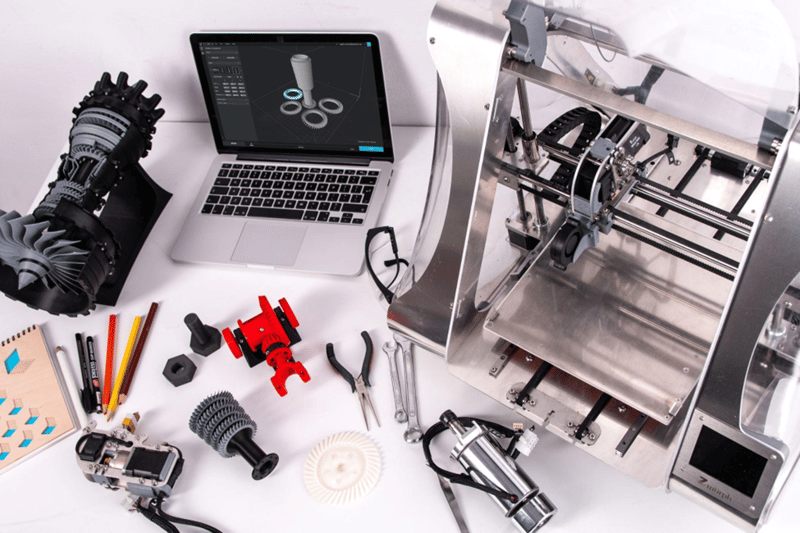 Image Source: Unsplash
Image Source: Unsplash
By Katie Brenneman
One of the exciting things about STEM education is that it’s hands-on and has immediate applications. Incorporating meaningful projects into the STEM curriculum can keep students excited and allow them to see immediate benefits from what they’re learning.
Many STEM projects involve building robots or similar machines, but an even more impactful activity could be creating IoT solutions to common problems — perhaps ones students have seen themselves.
The Internet of Things (IoT) refers to devices that are able to collect information and then exchange that data with other devices online. For example, a fitness watch is part of the IoT because it detects your pulse, sleep, and more and can send that information to your smartphone.
Introducing Students to IoT
To lay the foundation for an IoT project in the classroom, start by introducing students to the idea of IoT. You can give a simple definition and one example and then ask the class to give examples of IoT they are familiar with or see around them in the classroom.
Some possible answers include the smart board in the classroom, tablets, smart thermostats and lights at home, devices connected via Alexa or Google Home, and systems that allow for remote learning.
Once students have a clear understanding of IoT, help them make the connection between technology solutions and the problems they solve. Demonstrating these interesting applications of STEM is a great way to boost student engagement.
Understanding that IoT can solve a variety of unique challenges sets the stage for students to tackle IoT projects in class.
Examples of IoT Projects
Many of the most compelling projects will relate to problems that the students have seen or experienced.
For example, many students have older relatives who could benefit from technology solutions. Older Americans can use digital tools to manage their healthcare benefits, smart speakers to set reminders about appointments and medication, and smart sensors to keep them safer at home. The students in your class can work on IoT projects that benefit older people they know.
Other ideas for IoT projects include:
- Devices that can detect a person’s temperature, blood pressure, or other medical information and transmit it to the doctor without the need for an office visit
- A system that detects poor posture or muscle stiffness and creates an alert to remind the user to stretch, walk around, or sit up straighter.
- Devices that connect to a wheelchair, either to allow users to communicate with caretakers and family, or to detect dangerous situations and alert caregivers
Devices that allow for the tracking of lost pets — current solutions are limited and not easy to use
These ideas are just to get you started — any connected device that solves a problem is fair game!
How to Set Up an IoT Project For Students
There are a couple of different ways to approach an IoT project. Ideally, you could get approval from the district to buy the components students need to actually create the project, which may even include a small 3-D printer. If that’s challenging for multiple projects or groups, you might consider having the class choose one project and work on it together.
Once the project is complete, the students can test their IoT project. This includes testing the unit, checking the integrations, reviewing the system for usability and reliability, and doing end-to-end testing from the user’s perspective. If the students are creating a device for an older person, for example, this testing ensures the device is reliable, secure, and easy to use.
If getting components and actually building the IoT is out of reach, that doesn’t mean you can’t do an IoT project. Instead, you’ll have students or groups work on planning the project, including the components they need and how they’d work together to get the desired result.
If the students only plan in class, you can add a hands-on experience by creating a field trip to a shop or business with a 3D printer or other technology tools to create IoT devices. This allows everyone to see how the plans can become actual devices.
Incorporating New Technology Improves Teaching
Having new technology in the classroom improves how students learn. So beyond having students create technology to engage with STEM, think about how you can use technology in the classroom as well.
Technology that allows you to use video clips, games, and interactive activities can help students who have different learning styles engage with and retain material. Virtual tours allow students to be “onsite” at historical sites, major museum exhibits, and national parks that they may otherwise never get a chance to see.
Using technology to complete school assignments can help students get more out of a lesson than they would have simply reading a textbook and writing a paper. Also, being able to use digital tools to complete assignments helps prepare students to join a workforce that uses those same tools daily.
As you look for creative ways to incorporate IoT projects into STEM, don’t overlook the impact of using technology throughout your classroom as well.
Discover more ways to introduce students to new and evolving STEM careers with RobotLAB!
Check our products page and start your robotics lessons with RobotLAB and our learning Platform EngageK12!



